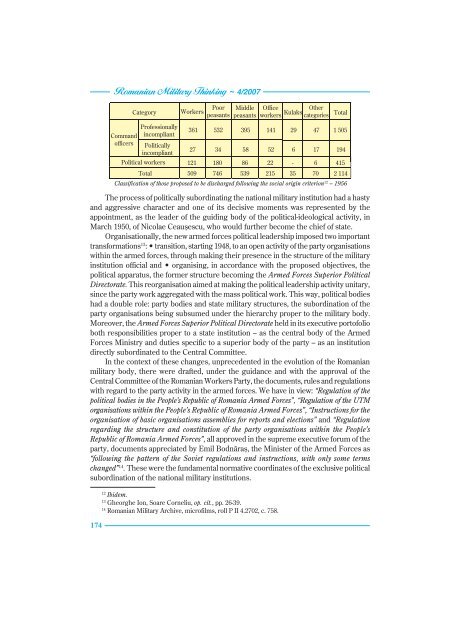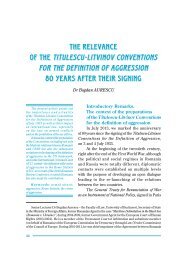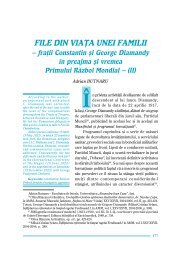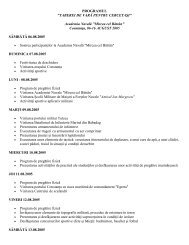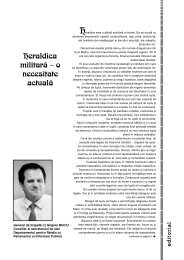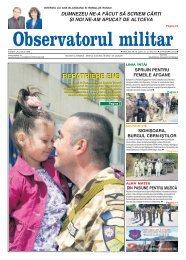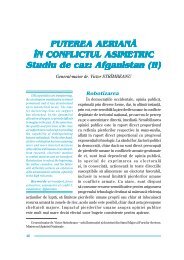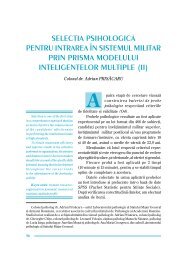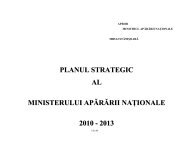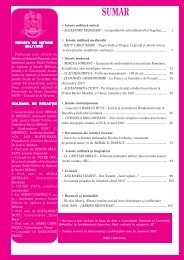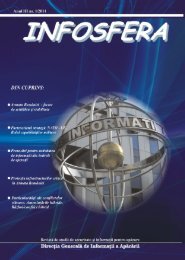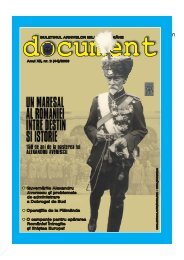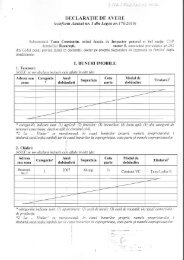Romanian Military Thinking
Romanian Military Thinking
Romanian Military Thinking
You also want an ePaper? Increase the reach of your titles
YUMPU automatically turns print PDFs into web optimized ePapers that Google loves.
174<br />
<strong>Romanian</strong> <strong>Military</strong> <strong>Thinking</strong> ~ 4/2007<br />
Command<br />
officers<br />
Category<br />
Professionally<br />
incompliant<br />
Politically<br />
incompliant<br />
Political workers<br />
Workers<br />
Poor<br />
peasants<br />
Middle<br />
peasants<br />
Office<br />
Other<br />
workers<br />
Kulaks<br />
categories Total<br />
361 532 395 141 29 47 1 505<br />
27 34 58 52 6 17 194<br />
121 180 86 22 - 6 415<br />
Total 509 746 539 215 35 70 2 114<br />
Classification of those proposed to be discharged following the social origin criterion 12 – 1956<br />
The process of politically subordinating the national military institution had a hasty<br />
and aggressive character and one of its decisive moments was represented by the<br />
appointment, as the leader of the guiding body of the political-ideological activity, in<br />
March 1950, of Nicolae Ceau[escu, who would further become the chief of state.<br />
Organisationally, the new armed forces political leadership imposed two important<br />
transformations 13 : • transition, starting 1948, to an open activity of the party organisations<br />
within the armed forces, through making their presence in the structure of the military<br />
institution official and • organising, in accordance with the proposed objectives, the<br />
political apparatus, the former structure becoming the Armed Forces Superior Political<br />
Directorate. This reorganisation aimed at making the political leadership activity unitary,<br />
since the party work aggregated with the mass political work. This way, political bodies<br />
had a double role: party bodies and state military structures, the subordination of the<br />
party organisations being subsumed under the hierarchy proper to the military body.<br />
Moreover, the Armed Forces Superior Political Directorate held in its executive portofolio<br />
both responsibilities proper to a state institution – as the central body of the Armed<br />
Forces Ministry and duties specific to a superior body of the party – as an institution<br />
directly subordinated to the Central Committee.<br />
In the context of these changes, unprecedented in the evolution of the <strong>Romanian</strong><br />
military body, there were drafted, under the guidance and with the approval of the<br />
Central Committee of the <strong>Romanian</strong> Workers Party, the documents, rules and regulations<br />
with regard to the party activity in the armed forces. We have in view: “Regulation of the<br />
political bodies in the People’s Republic of Romania Armed Forces”, “Regulation of the UTM<br />
organisations within the People’s Republic of Romania Armed Forces”, “Instructions for the<br />
organisation of basic organisations assemblies for reports and elections” and “Regulation<br />
regarding the structure and constitution of the party organisations within the People’s<br />
Republic of Romania Armed Forces”, all approved in the supreme executive forum of the<br />
party, documents appreciated by Emil Bodn`ra[, the Minister of the Armed Forces as<br />
“following the pattern of the Soviet regulations and instructions, with only some terms<br />
changed” 14 . These were the fundamental normative coordinates of the exclusive political<br />
subordination of the national military institutions.<br />
12 Ibidem.<br />
13 Gheorghe Ion, Soare Corneliu, op. cit., pp. 26-39.<br />
14 <strong>Romanian</strong> <strong>Military</strong> Archive, microfilms, roll P II 4.2702, c. 758.


